25 F. high temperature yesterday in the Twin Cities.
24 F. average high on December 27.
28 F. high on December 27, 2015.
December 28, 2000:
Central and southeast Minnesota receive 6 to 10 inches of snow. Some
notable snow amounts include: Chanhassen NWS Forecast Office with 7.8
inches, St Cloud with 7.5 inches, and Hutchinson, Willmar, Albany, Red
Wing, and Long Prairie with 7.0 inches.
December 28, 1979: Balmy weather enables the city park crew in Duluth to rake leaves.
December 28, 1927: A cold snap results in sharp temperature drops across Minnesota. The temperature would fall from 41 to -15 at Farmington.
December 28, 1979: Balmy weather enables the city park crew in Duluth to rake leaves.
December 28, 1927: A cold snap results in sharp temperature drops across Minnesota. The temperature would fall from 41 to -15 at Farmington.
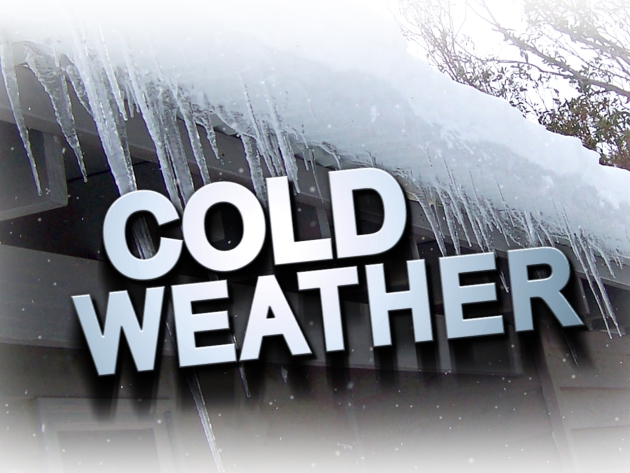
Wednesday Thaw - Reasons to Embrace Numbing Cold
When life gives you (ice-cold) lemons - make Arctic Lemonade! Our coldest days tend to be sunny in Minnesota. Our constellation of lakes are too small to spark persistent lake-effect clouds. There is research suggesting cold weather improves mental acuity; decision-making gets better during the winter!
The crime rate drops and your garbage doesn't stink. All compelling reasons to celebrate the Nanook.
You buying any of this? Hey, you can't blame a guy for trying to put a positive spin on an atmospheric near-death experience. January is Minnesota's coldest, snowiest month, and studying the maps that isn't hard to believe. No blizzards are brewing but a parade of memorable cold fronts sail into town the first half of January.
Mid-30s will feel good today before a gusty northwest wind tugs the mercury back down to average. No fresh snow for New Year's Eve festivities; snow Sunday night into Monday may drop a plowable accumulation. Single digit highs and subzero lows are likely next week; another Siberian slap the second week of January.
Looks like we got our Winter Mojo back!
Map credit: "This is the NOAA GFS Ensemble. It’s an average of many model runs, and the ECMWF Model run in the UK is also showing much the same. This adds confidence to the forecast. Note the rising pressures over Greenland as well. This would correspond to a slight negative in the NAO."
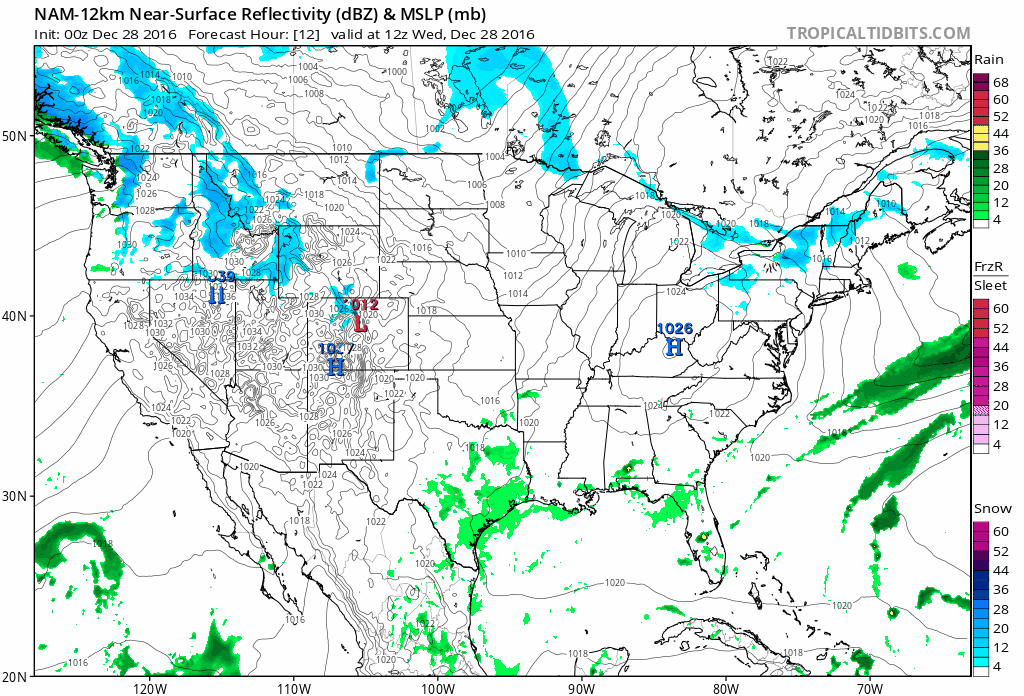
84-Hour Future Radar. NOAA's 12 KM NAM guidance shows a fairly quiet 3+ days shaping up across the USA; a strong cold frontal passage ending the mild honeymoon for eastern states, while a weak Alberta Clipper brushes far northern states by New Year's eve - and heavy rain/snow pushes into western Washington State. Source: Tropicaltidbits.com.
Character-Building Stretch Next Week.
Enjoy "average", because temperatures drop off early next week with
single-digit highs the latter half of next week with subzero lows. Not
as cold as a couple Sundays ago, but this time the chill will linger
longer. ECMWF numbers for the Twin Cities: WeatherBell

The Big Story: Couple of Waves of Subzero Air Pushing Into USA.
The first shot across the bow comes next week; GFS guidance hinting at a
second push of negative numbers by mid-January. If it's any consolation
temperatures usually bottom out the second or third week of January.
Another Dip. According to GFS ensemble data air temperatures bottom out close to -10F one week from Sunday. Source: Aeris Enterprise.
Face-Peeling Wind Chills. A chill factor of -25F one week from tomorrow? Now there's something to look forward to.
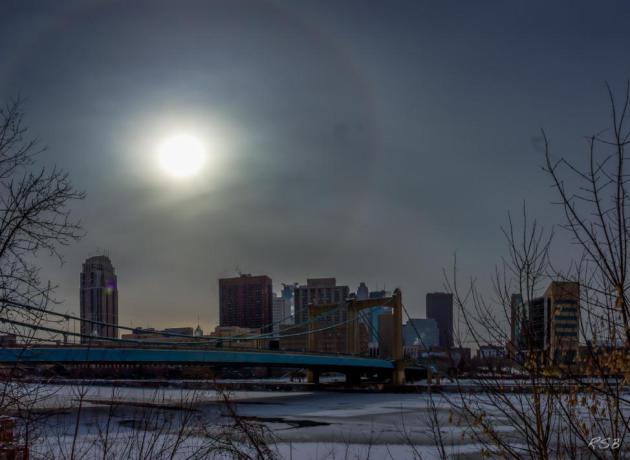
Good News on a Depressing Topic.
So maybe SAD (Seasonal Affective Disorder) isn't "settled science"? Is
it all in our heads? Here's an except of an interesting story at The Buffalo News: "...A
recent study in the Journal of Clinical Psychological Science, if it
continues to stand up to peer review, essentially debunks SAD as a real
condition. Scientific American magazine outlines some of the study’s
findings and other evidence. The investigators in the study did not
initially question the acceptance of SAD as a real condition, and they
did expect to find a correlation of more occurrences at higher
latitudes. In other words, they went in to their work expecting to learn
more about SAD, rather than to raise questions about its validity.
Instead, what they and the Centers for Disease Control and Prevention
found (the CDC had done a large, detailed phone survey) was quite to the
contrary of what had been widely accepted for three decades..."
Study Finds Seasonal Affective Disorder Doesn't Exist. Here's a summary of recent research at Scientific American.
Photo credit above: Steve Burns.
Photo credit: "Fuel tanks are seen after floodwaters rose because of Hurricane Matthew in Lumberton, N.C." (Chris Keane/Reuters)
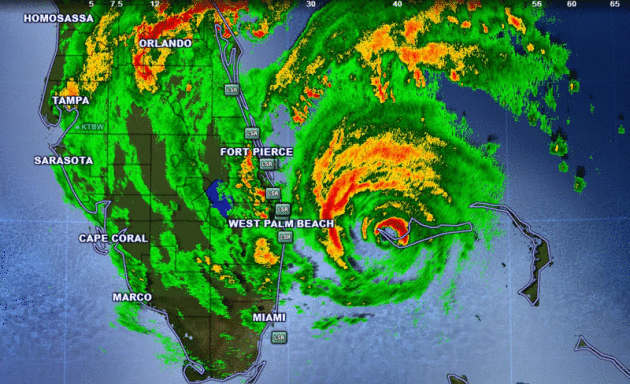
Doppler radar loop: Hurricane Matthew on October 6, 2016.
Worst Evening Rush Hour Traffic In The World? At the top of the list no city wants to be on: Bangkok. CNN.com reports: "Bangkok
has a sparkling metro system, river ferries and even a network of
canals. But it still has the worst evening rush hour traffic in the
world. Journey times more than double in Thailand's capital city during
the evening commute, according to GPS manufacturer TomTom. "It's pretty
extreme," Nick Cohn, senior traffic expert at TomTom, said of the city's
road delays. It might get even worse, especially as the country's
middle class continues to grow..."
When Robots Take Jobs, Workers Deserve Compensation.
Technology will save us? Government will provide a safety net when
entire industries are disrupted? Or is this a matter of personal
responsibility - learning new skills to remain perpetually employable?
Here's an excerpt from Financial Times: "...Stressing
that technology was not destiny, the report argued it was too soon to
abandon the possibility of near-full employment. “The issue is not that
automation will render the vast majority of the population
unemployable,” wrote Jason Furman, chair of the Council of Economic
Advisers. “Instead, it is that workers will either lack the skills or
the ability to successfully match with the good, high paying jobs
created by automation...”
The Game of a Lifetime. Check out a story at Wall Street Journal that will restore your faith in humanity; here's the intro: "Like
almost anybody who has picked up a golf club, my stepfather has always
had a fantasy: To play at the Augusta National Golf Club. The legendary
Georgia course is home to the Masters Tournament, and admission is
strictly limited to its closely guarded roster of members and their
invited guests. Neither I nor my stepfather knew a soul there. So when I
said I wanted to surprise him with a round of golf there, everyone I
talked to said it would be impossible. Why would an absolute stranger
invite a 70-year-old suburban Detroit real-estate developer to Georgia
to tee off at one of the world's most secretive and exclusive clubs? In a
season of giving, this is a story of acts of generosity, each one a
little more surprising and heartfelt than the one before..." (Photo credit: augusta.com)
Up In The Air: Meet the Man Who Flies Around the World For Free.
Fascinating, and on some level, a bit sad. What kind of life is this? I
like to fly, but this sounds like aviation purgatory. Here's an excerpt
from RollingStone: "...One
of the fundamental steps a Hobbyist can take is choosing an airline to
compete for top-tier loyalty status; Schlappig chose United. Nothing was
free up front — the object of the game was a return on investment. A
Hobbyist doesn't spend unless he can get the same or greater value in
return. It took Schlappig about a year to master the dozens of
convoluted techniques, exploiting mistakes in ticketing algorithms and
learning the ins and outs of the frequent-flyer programs airlines had
created after deregulation in the late 1970s. The second leg of the game
is credit cards — collecting and canceling as many as possible, and
deploying a series of tricks to reap the reward points that
bank-and-airline-card partnerships would virtually give away. As he
delved deeper, Schlappig learned about a third level, a closely guarded
practice called Manufacture Spend, where Hobbyists harness the power of
the multitudes of credit cards in their pockets..."
Photo credit: "Ben Schlappig is a master of flying around the world — at no cost to himself." Bryan Derballa.

TODAY: Patchy clouds, thawing out. Winds: W 10-15. High: 34
WEDNESDAY NIGHT: Partly cloudy. Low: 24
THURSDAY: Cloudy and gusty, few flurries in the air. Winds: NW 15-25. High: near 30
FRIDAY: Some AM sun, then clouds increase. Winds: S 10-15. Wake-up: 17. High: 29
NEW YEAR'S EVE: Gradual clearing, good travel weather. Winds: NW 10-20. Wake-up: 19. High: 27
NEW YEAR'S DAY: Fading sun, light snow at night. Winds: SE 8-13. Wake-up: 16. High: 31
MONDAY: Snowfall amounts may be plowable. Winds: N 10-20+ Wake-up: 22. High: 29
TUESDAY: Peeks of sun, turning much colder - subzero chill factor. Winds: NW 10-15. Wake-up: 9. High: 12
THURSDAY: Cloudy and gusty, few flurries in the air. Winds: NW 15-25. High: near 30
FRIDAY: Some AM sun, then clouds increase. Winds: S 10-15. Wake-up: 17. High: 29
NEW YEAR'S EVE: Gradual clearing, good travel weather. Winds: NW 10-20. Wake-up: 19. High: 27
NEW YEAR'S DAY: Fading sun, light snow at night. Winds: SE 8-13. Wake-up: 16. High: 31
MONDAY: Snowfall amounts may be plowable. Winds: N 10-20+ Wake-up: 22. High: 29
TUESDAY: Peeks of sun, turning much colder - subzero chill factor. Winds: NW 10-15. Wake-up: 9. High: 12
Climate Stories...
Map credit: Climate Reanalyzer.
Photo credit: "Waves crash over a sea wall at Naval Base Ventura County." Courtesy of Naval Base Ventura County

File photo: Reuters.
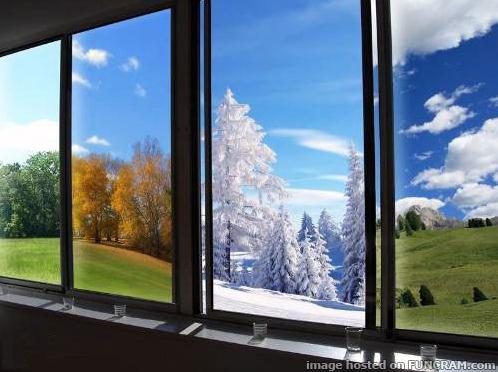
States Will Lead on Climate Change in the Trump Era. Here's an excerpt of an Op-Ed from the Editorial Board at The New York Times: "State governments will serve as an important bulwark against any attempt by President-elect Donald Trump to roll back the progress the United States has made in addressing climate change. And that’s good news for the planet. Over the last decade or so, most states have reduced their greenhouse gas emissions by promoting energy efficiency and renewable fuels. These trends should continue as clean energy costs continue to decline and, in some parts of the country, fall below the cost of dirtier fuels like coal. The Brookings Institution reported this month that between 2000 and 2014, 33 states and the District of Columbia cut carbon emissions while expanding their economies. That list includes red states run by Republican legislatures, like Alaska, Georgia, Tennessee and West Virginia..."

No comments:
Post a Comment